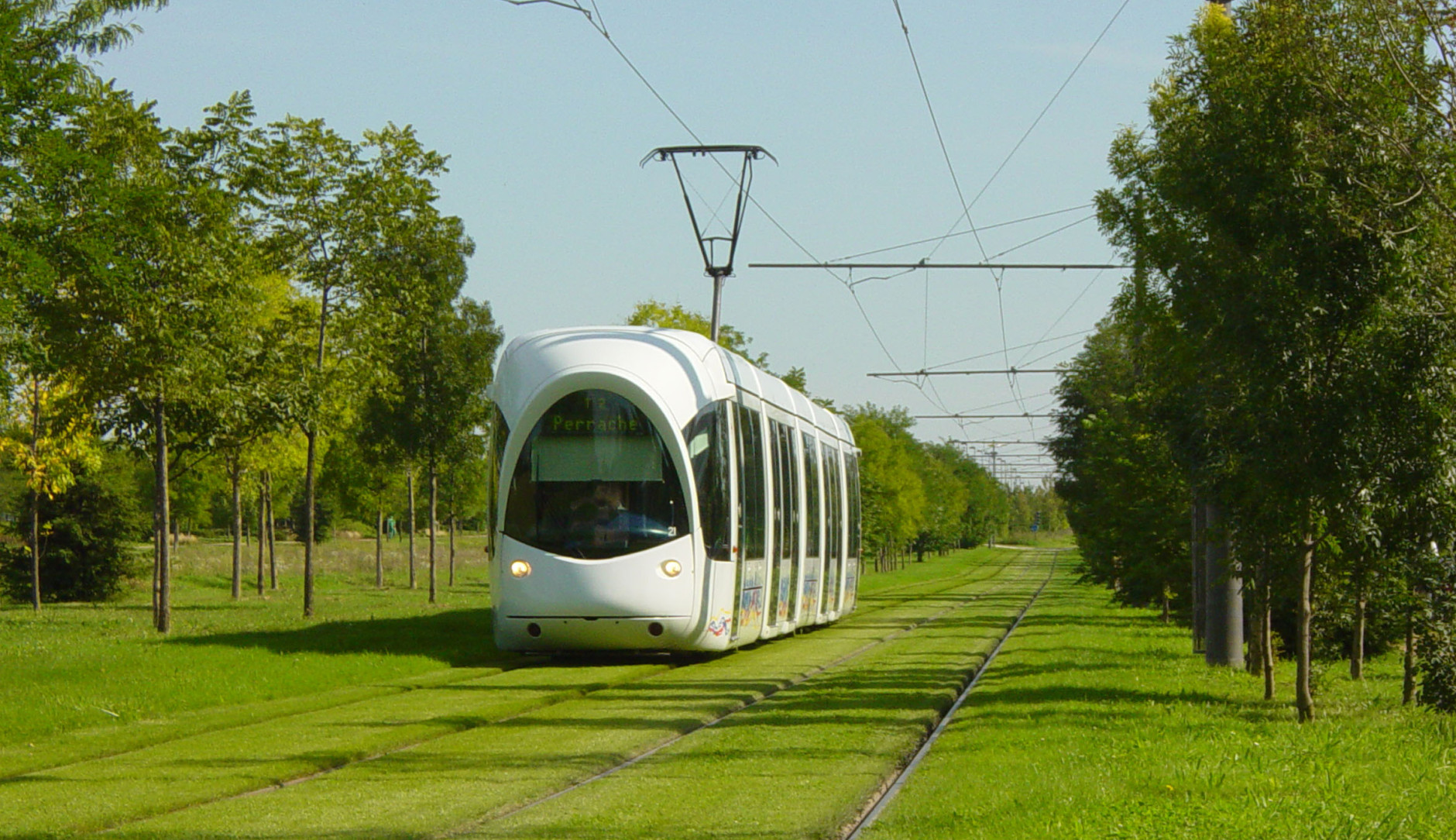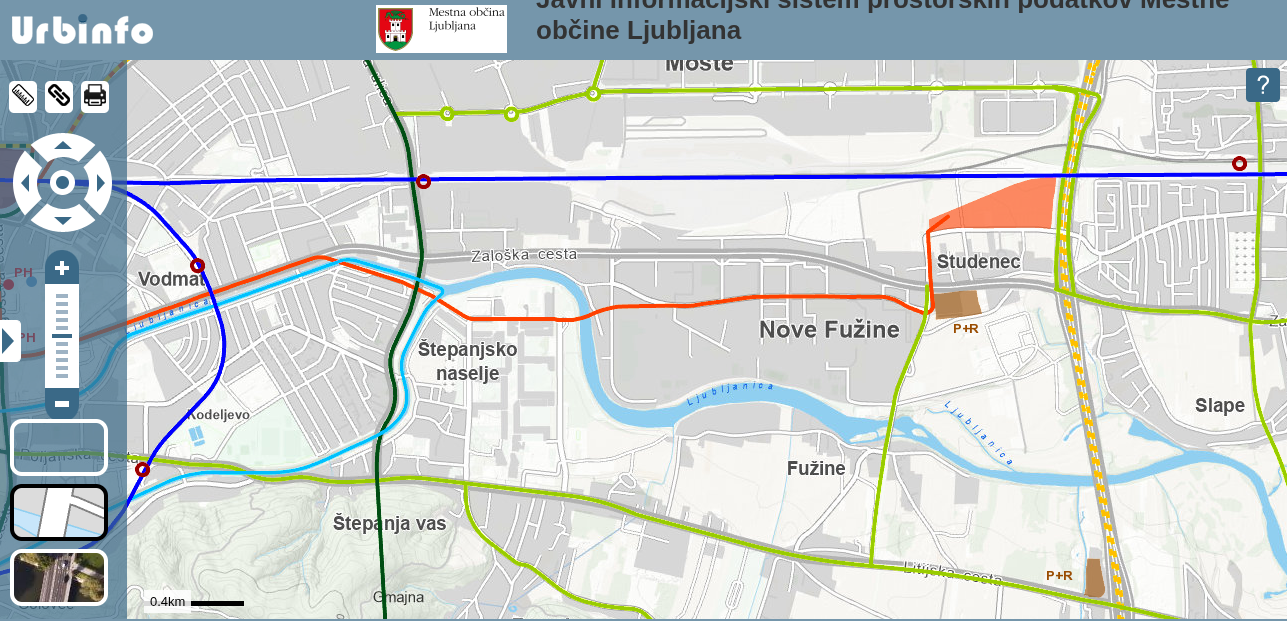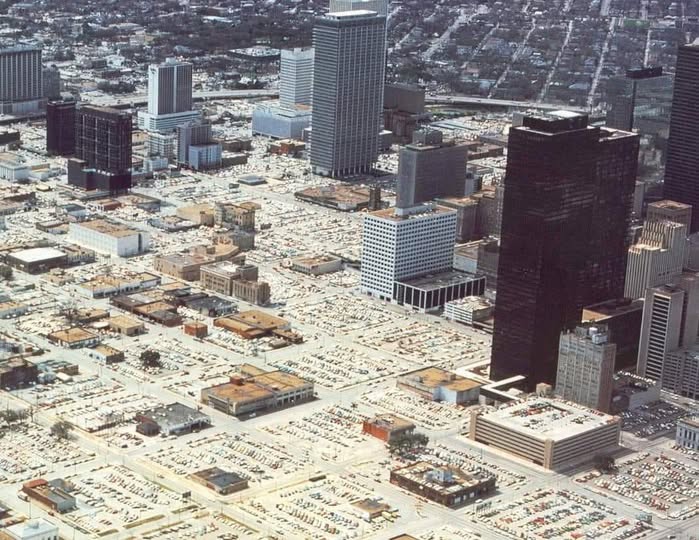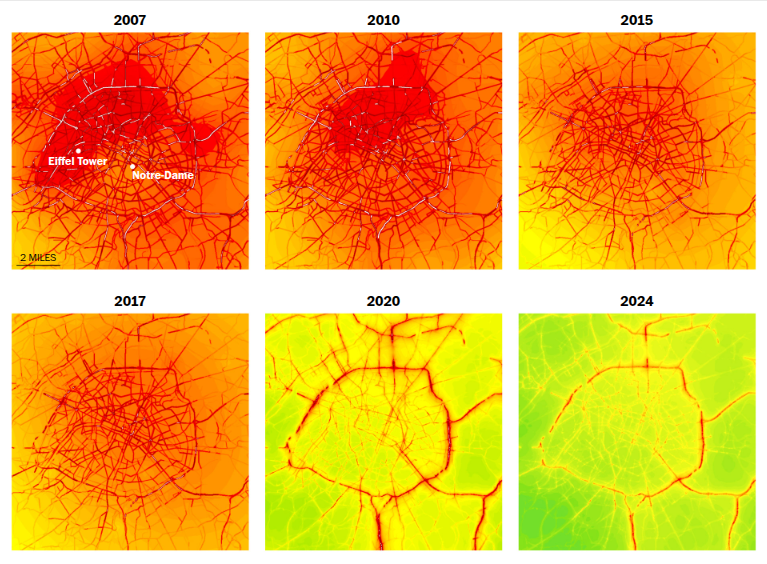Ljubljana: A city for people or a city for cars?
If we look across Europe, we see metropoles trying to transition into the 21st century and create more liveable cities. Ljubljana and its traffic planning go in the opposite direction: create more space for cars - like with the propose traffic overflow road cutting through Štepanjsko naselje and Nove Fužine already proposed in 2010. We are asking why?

(Photo: Lyon lightrail, Source: Municipality of Lyon)
The new urban development plan is accessible via Urbinfo and shows and overflow roads to be able to handle more car traffic slicing up the residential areasŠtepanjsko naselje and Nove Fužine.
The project in question was already cancelled in 2010 because it destroyed well-designed urban neighbourhoods and recreational areas and posed a security risk by putting a high traffic road between residential areas and kindergardens and parks.
Fast forward 15 years and the same road is proposed again. It is probably not the only project pulled from the attic and strangely out of time and place.
 (Photo: Overflow parking and road to city center, Source: Urbinfo MOL)
(Photo: Overflow parking and road to city center, Source: Urbinfo MOL)
We can't breathe!
Ljubljana has changed in the last years. Not for the better. Long gone are the days of challenging for the European Green capital of Europe. We are today the only European capital without a tram or metro system and Slovenia is one of the most centralised countries in Europe. Because of the latter, everything has to happen in Ljubljana and because of the first, everything has to happen by car.
The result: motorisation increases every year from a low of 492 cars per 1000 inhabitants in Ljubljana in 2014 to now 541. Kilometers driven likewise increase every year and with it air pollution. Imagine: there are 150.000 cars running through Ljubljana daily, 97.000 commuting for work. You either accept hours stuck in traffic or you move to Ljubljana - which puts further pressure on an already tight real-estate market and housing cost.
Proposing traffic overflow roads in such a unsustainable situation feel like installing a bypass for a clogged artery. It might save you a few years, but it's a quick fix instead of long term therapy and healthier lifestyle. We should ask ourselves how many such bypasses Ljubljana can still handle before the eventual equivalent of a heart attack. The reality is even worse: a bypass will restore flow into a circulating system, whereas a traffic bypass only allows yet more cars to flow into the city center.
Also: what's the point? Where should all these additional cars park? Is Ljubljana a city for inhabitants or for commuter cars? It looks like we're copying the urban strategies of the US cities in the 80s.
 (Photo: Downtown Houston - a parking lot, Source: Reddit)
(Photo: Downtown Houston - a parking lot, Source: Reddit)
What's next? Turning Tivoli into a parking spaces or maybe creating a vision and plan how our capital can join other European metropoles - creating living space for its populations rather than destroying them to make room for commuting cars and traffic.
Take Paris for example: in over 20 years the city managed to reduce air pollution significantly be redesigning traffic, removing parking spaces and making space for bike lanes and pedestrian areas.
The city did not collapse by reducing car traffic. Quite the opposite: air pollution is down and the number of cars circulating during rush hour has been reduced significantly with levels of harmful particles responsible for major health problems, including heart attacks, lung cancer, bronchitis and asthma dropping by over 50%.
 (Photo: Airpollution in Paris over time, Source: Washington Post/Airparif)
(Photo: Airpollution in Paris over time, Source: Washington Post/Airparif)
Metro, Tram, Bus, or... Rail
You may have seen our petition against the planned overflow road through Štepanjsko naselje. We believe we are not the only residential area affected by reckless city planning. Space is a luxury so any additional public transport infrastructure will compete for space with existing roads. Trams and bus lanes will cannibalise space for cars.
Going under earth to build a Metro is too expensive (~50-60M€/km). Why not go above ground? And build a monorail above existing traffic roads. A project in Malta was budgeted with 18M€/km - much less than a metro and likely financed in large parts by the EU under Green Deal and sustainablity programms - whereas new roads for commuter cars would have to be paid by Ljubljana taxpayer money.
 (Photo: Monorail in Australia, Source: MaltaToday)
(Photo: Monorail in Australia, Source: MaltaToday)
Too gadgety? Light rail systems would fall in the same category, be eligible for EU sustainability funding and are already in use across Europe at similar cost:
City / Project (year) | Length (km) | Total cost (nominal) | Cost per km (approx.) | Notes & source |
Besançon (France) | 14.5 | €254 m | €17.5 m / km | Low-cost French example, avoided complex civil works. |
Strasbourg (France) | €304 m | ~€23.5 m / km | example with significant urban renewal | |
Lyon T6 (France) | 6.7 km | €161 m | €24 m / km | Recent French extension (includes stations & rolling stock). |
Dublin Luas Cross (Ireland) | ~4.8 km | ~€344–368 m | ~€72–77 m / km |
Considering the large scale parking planned at Studenec and Zaloška Cesta, which is mostly straight, a light or monorail from the highway commuter parking to the Univerzitetni klinični center Ljubljana would mean multiple advantages:
significant reduction of cars commuting into the city center
no need for additional transit roads such as the one planned to go through Štepanjsko naselje
limited cannibalisation of existing roads
Zaloška Cesta is mostly business and industry with limited residential buildings facing the street and parking spaces that could be used to widen the road, ideal for construction of a rail system
Even monorails are no longer extraordinary as cities have adopted them to save space and handle difficult terrain:
Venice has the People mover, because the city is not accessible by traffic. It transports 3500 visitors per hour from Tronchetto to Piazalla Roma.
Chongqing in China has a 500km monorail network connecting a remote and hilly city landscape with highspeed public transport.
Even Lille in the north France has parts of its Metro running overground on pillars along the principal car arteries.
Whether Lightrail or Monorail, the goal must be the same: reduce the number of cars having to commute from E57 into the city center.
This requires a larger vision of how we want Ljubljana to develop in the next 10-20 years. The city and its inhabitants deserve such a vision and plan. It would be our "therapy" to change towards a healthier and more lively city.
Let's build this city. For inhabitants, not for cars.